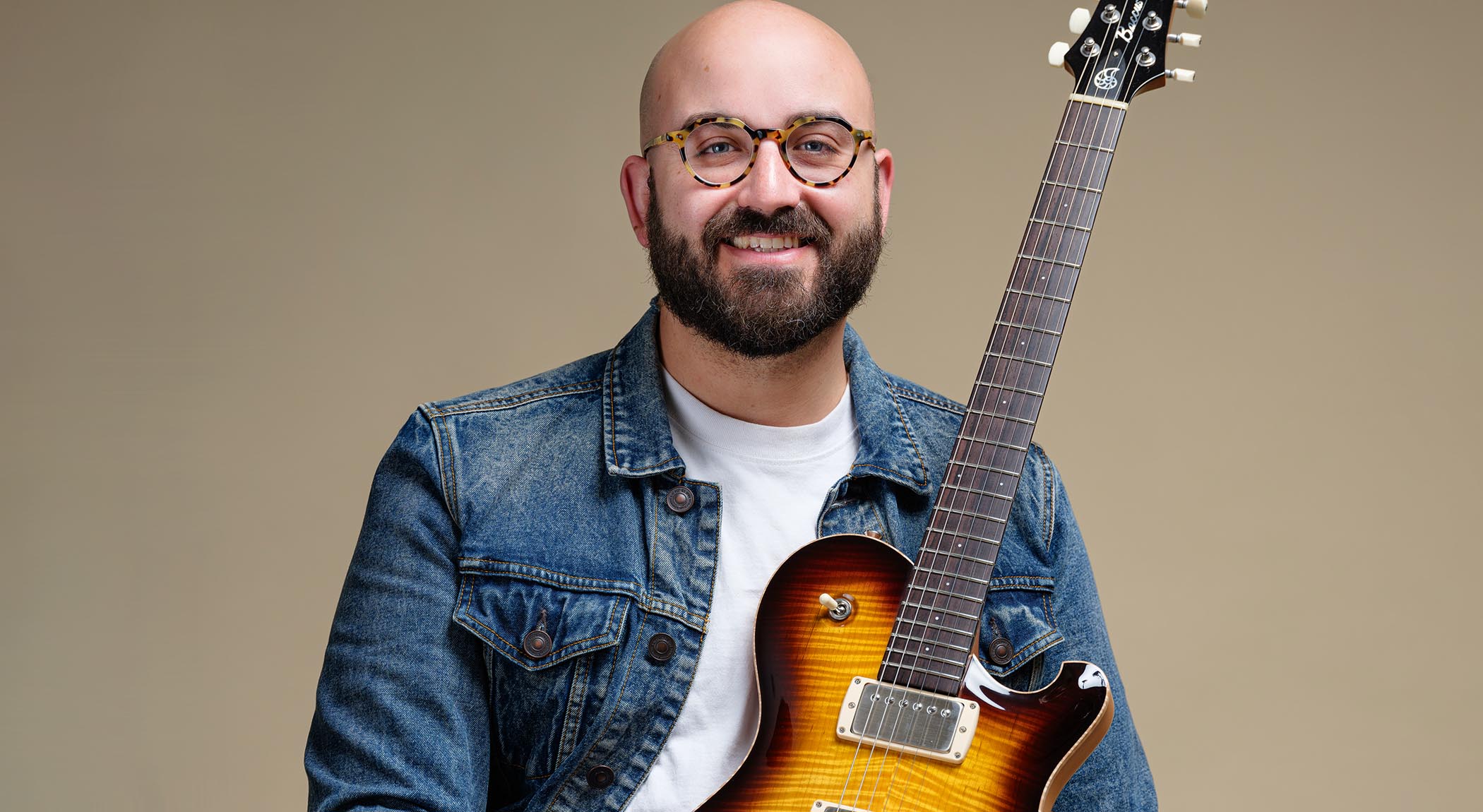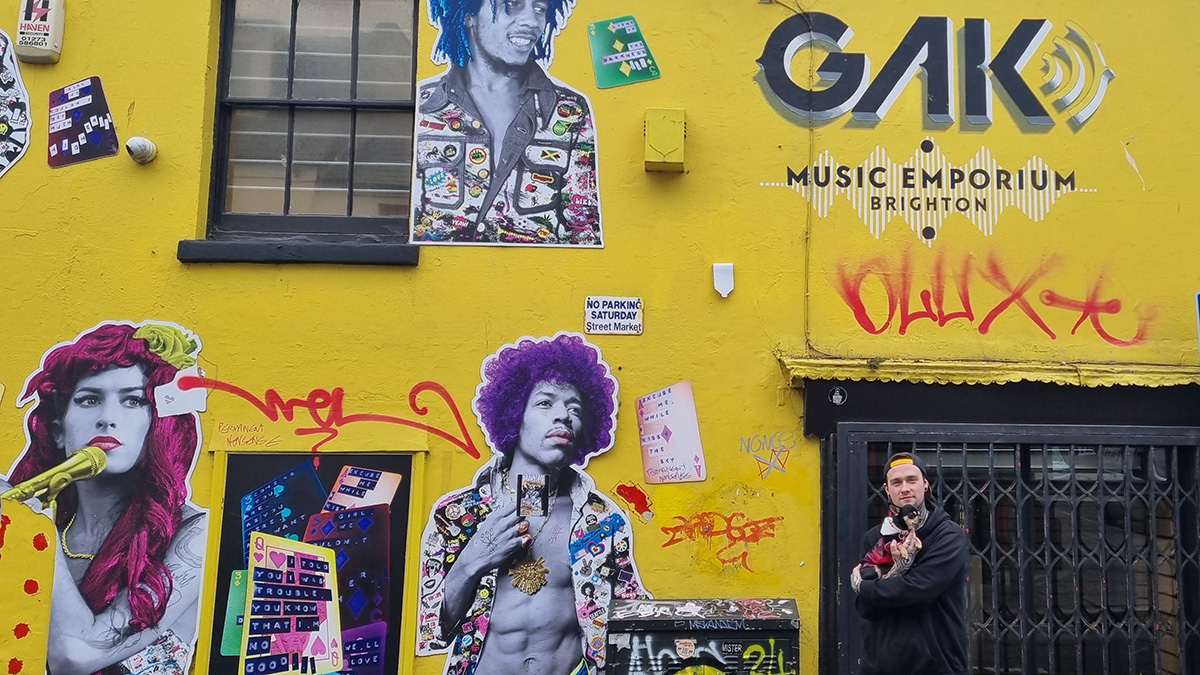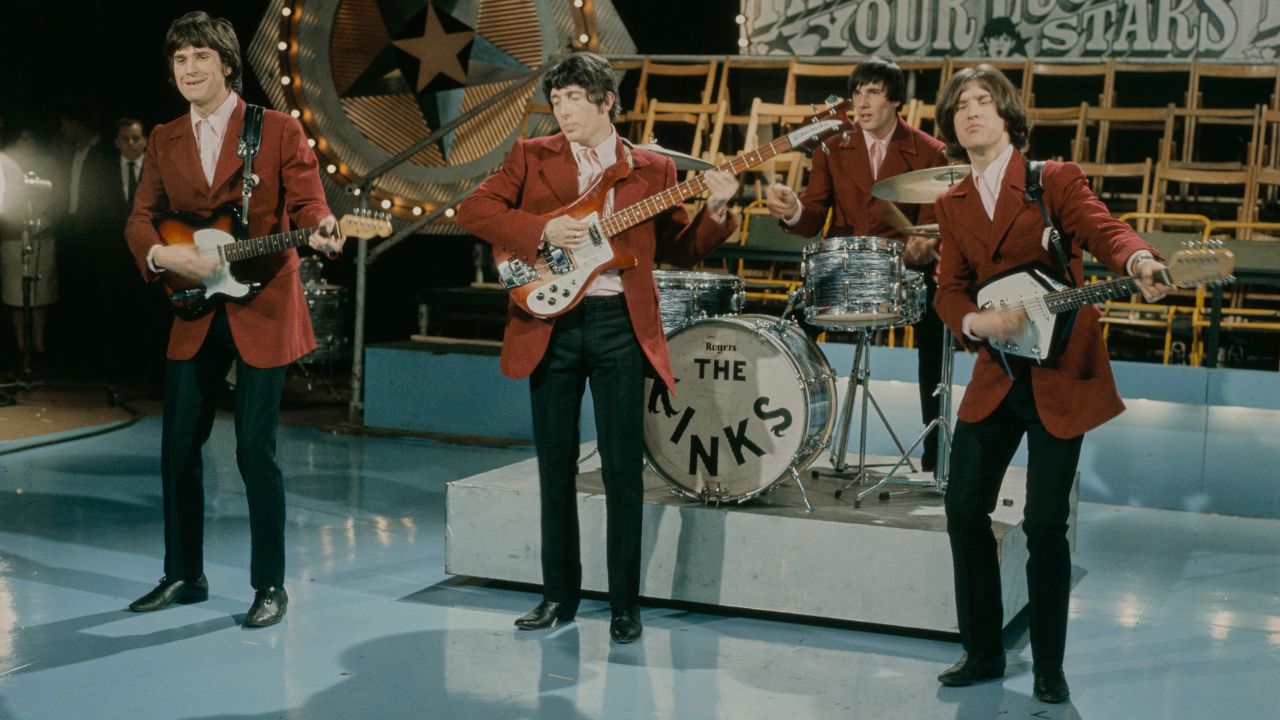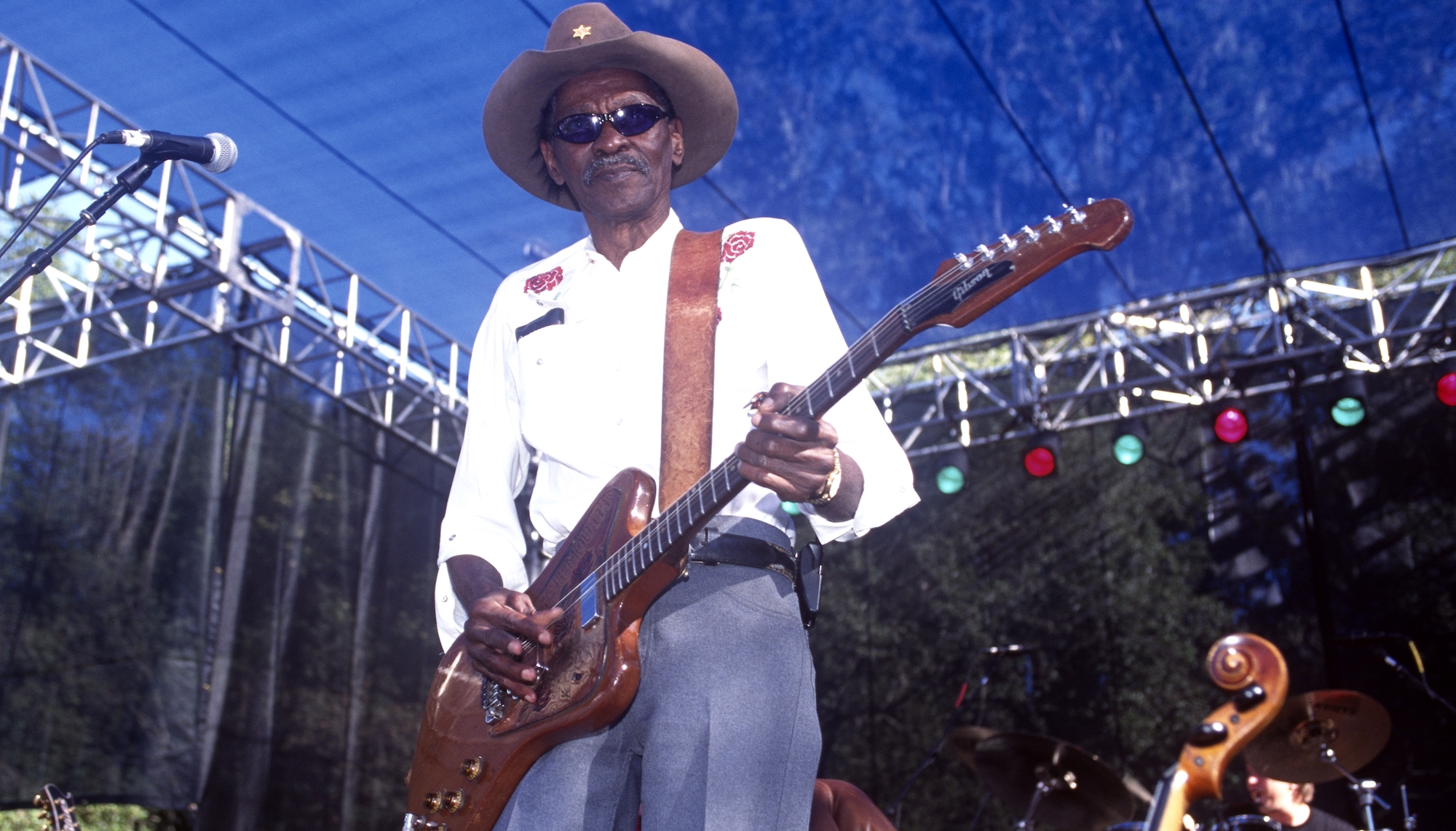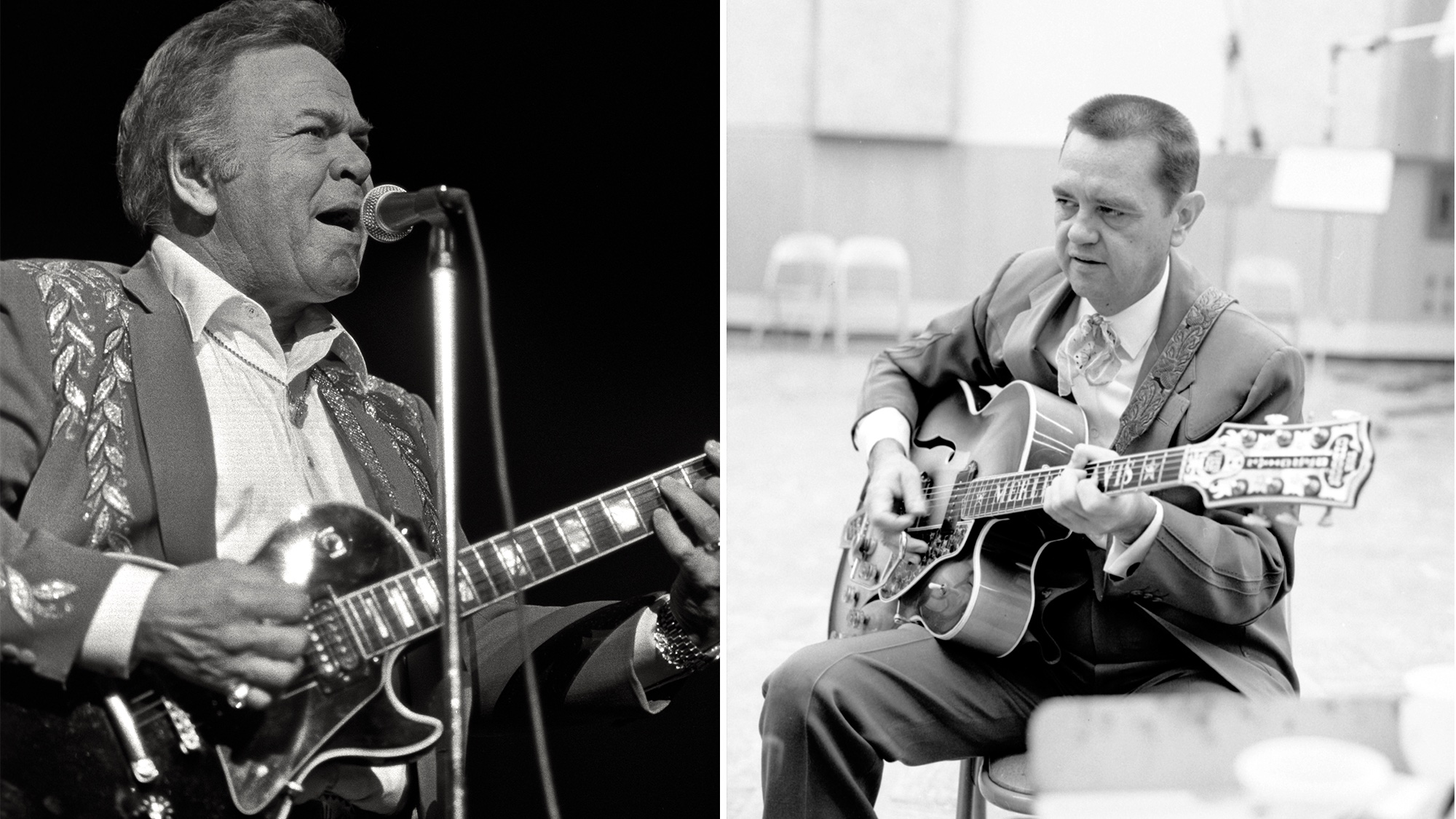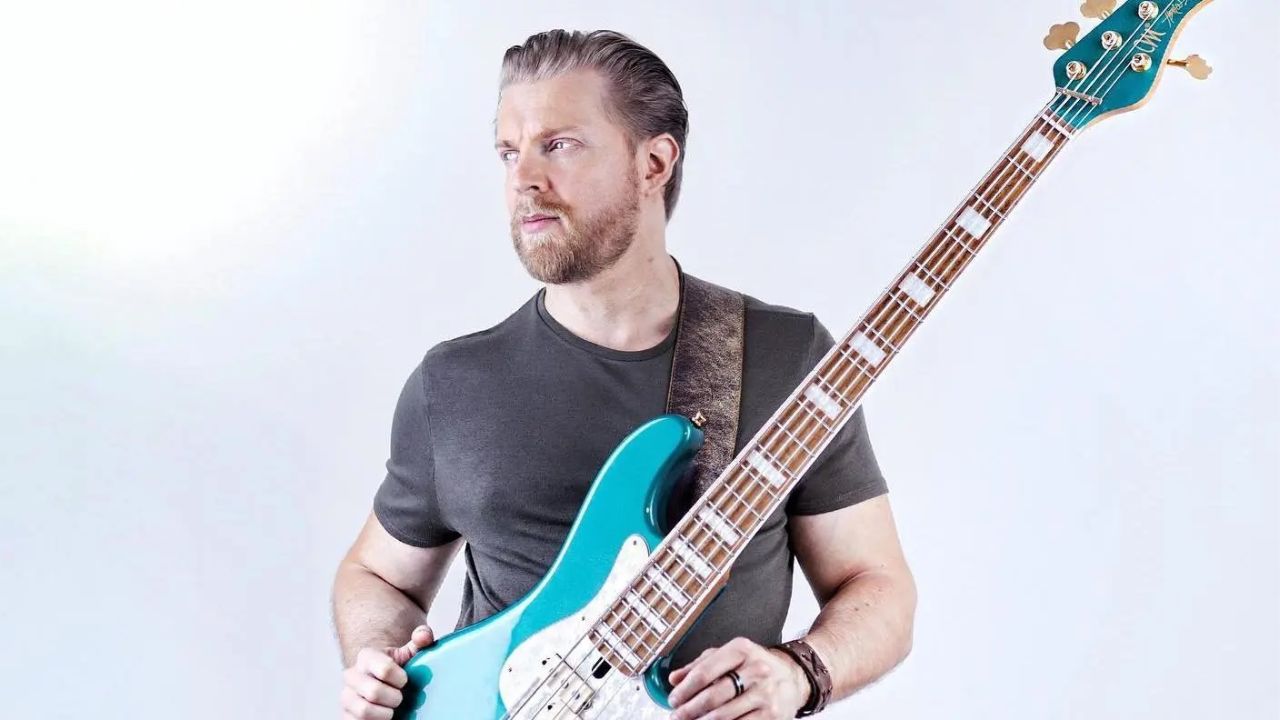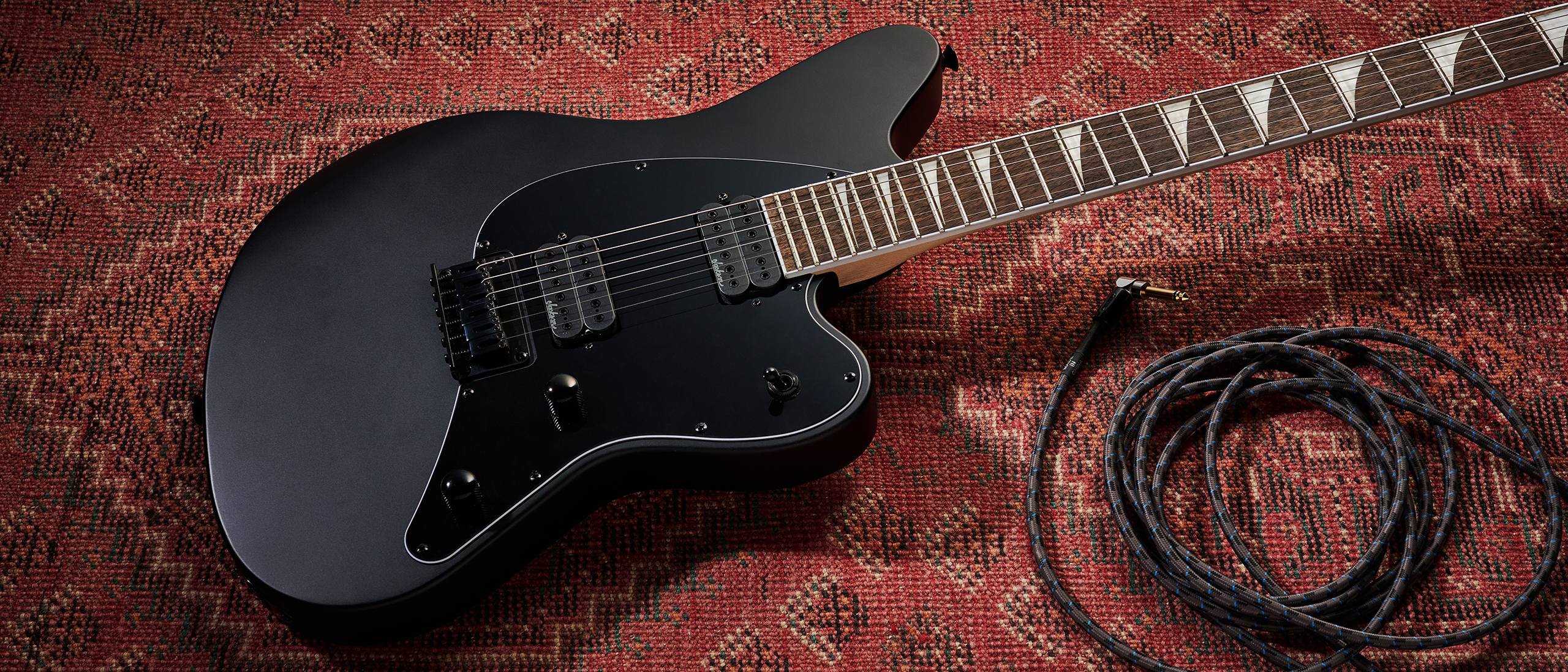“I love a lot of those classic players. I just didn’t want to play like them. Like Captain Kirk, I wanted to go where no-one’s gone before!” Yngwie Malmsteen names 11 guitarists who didn’t shape his sound – but he still thinks are great
The larger-than-life Swedish maverick was more influenced by violin than guitar – but he still has soft spots for some mind-blowing players

With all the apocalyptic news headlines and inescapable feelings that the world is tearing itself apart, you can always rely on the man famous for playing a cream-colored Strat affectionately nicknamed ‘The Duck’ to be doing exactly what we imagine he’d be doing.
“I’m cruising around Miami in a convertible Ferrari... driving around the beach in the sun, like one does!” Swedish maverick Yngwie Malmsteen cackles.
The virtuoso relocated many moons ago to start a new life in America; and bearing in mind the sub-zero temperatures and lack of daylight in Stockholm, his city of birth, it’s a perfectly reasonable way for him to be spending the morning.
You only get one shot at life and Yngwie Malmsteen is not the kind of person to waste a second. If he’s not playing guitar, he’s behind the wheel thinking about playing guitar. “Driving around in a Ferrari is a very therapeutic thing for me,” he continues.
“I even write songs about it like Top Down, Foot Down from my World On Fire album. Life on the beach just happens to be one of the things I like, so that’s what I’ve been doing for the last 35 years. It’s actually still really cold in most of the States right now. There’s a freeze warning and all the planes are grounded... except down here in Miami!”
Guitar World is speaking with the maestro for our semi-regular ‘10 guitarists who shaped my sound’ feature. There’s just one problem this time round, however – no guitar players were actually responsible in the shaping of the Malmsteen sound.
He’s quick to point out he means no disrespect to any of the six-string greats who came before him. He looks up to them just like the rest of us – they simply didn’t rub enough off on him to drastically influence his world-changing music.
Get The Pick Newsletter
All the latest guitar news, interviews, lessons, reviews, deals and more, direct to your inbox!
So just for the shredder extraordinaire and fire-breathing mastermind of neoclassical rock ’n’ roll, we’re going one louder for today’s feature, which is playfully renamed ’11 guitarists who didn’t shape my sound – but I still think are great.’
“I wanna be really careful about this – I don’t want people to think I’m being arrogant or talking bad about people,” Malmsteen says, in a way that’s far more down-to-earth, measured and astute than he’s typically portrayed.
“I love Angus Young, Brian May and a lot of those classic players. They’re all amazing. But they didn’t make me want to play like them. I just enjoyed hearing them play in their own style.
“I was always a guitar maniac, waking up with the guitar on me, playing on the train, playing on the bus, every waking hour. I explored the fretboard so much that I realized there was more to the instrument than what rock ’n’ roll guitar players had done before me.
“I still love B.B. King and Billy Gibbons. I love them all. I just didn’t want to play like them. It wasn’t necessarily a deliberate thing – but like Captain Kirk, I wanted to go where no-one’s gone before!”
The Fender signature artist’s biggest musical influence is, of course, Niccolò Paganini, the Italian violinist who died in 1840. A prodigious revolutionary who stunned with his dexterity and agility – attacking the instrument with a fiery intensity in stark contrast to the well-mannered overtures of his time – it’s easy to draw comparisons between the early Romantic composer and the man of the moment, despite the 181 years that separate their births.
The choice of stringed instruments may differ, and so do the decibel readings, given the 56 Marshall heads seen on stage for Malmsteen’s last tour – but the intent is, for the most part, very much the same.
I saw Jimi smashing and burning his guitar and thought, ‘Wow, this is pretty cool!’ so I picked my guitar up
“All of that fast stuff I do, those five or six-string arpeggios, are from Niccolò Paganini,” Malmsteen confirms. “Listen to Caprice No. 5 and you’ll hear exactly where I got it. That was by far my biggest influence.
“I was clearly not well... you can’t be thinking straight if you’re attempting to play shit like that on a guitar, which has a longer neck and is tuned to 4ths, not 5ths! The distances are much longer compared to violin.
“My brother played violin and I could see it involved very short spaces. You can reach things really quickly... although I’m not saying it’s easy. But I was hooked on the sound of a distorted Marshall stack, double bass drums and smoke bombs. I could never get away from that shit!”
Here, then, are the players Malmsteen would like to single out as innovators who changed the game for the guitar community as a whole, rather than himself personally.
1. Jimi Hendrix
“Jimi was more of a visual thing than a musical influence. I’m the youngest in my family and have aunts and uncles who are opera singers and musicians. I got a violin for my fourth birthday. I got my first guitar on my fifth birthday.
“For my sixth birthday, I got a trumpet and started having trumpet lessons, piano lessons and all this shit. I wasn’t interested at all. So I had this guitar but it was just like another toy for a kid hanging on the wall.
“Then when I was seven, Jimi Hendrix died and they were showing footage of him on the TV. I saw Jimi smashing and burning his guitar and thought, ‘Wow, this is pretty cool!’ so I picked my guitar up off the wall.
“My brother already played guitar but I didn’t ask him for anything. I literally just picked up the guitar and started playing from that moment. I remember it so clearly.”
2. Eric Clapton
“I guess my first electric guitar hero was Eric Clapton, though I didn’t actually know it at the time. My mother had the John Mayall and the Bluesbreakers album and I had no idea who was playing guitar. I just heard it and thought, ‘I really like this!’
“So without knowing why or who, I just became really fascinated by that sound. And very quickly I realized that most rock ’n’ roll consisted of five notes, and I didn’t really feel good about that. I wanted to do something different.
“Then I discovered Genesis around the age of eight. It felt like a whole new universe of music – but I wasn’t influenced by the guitar players. I would say [founding keyboardist] Tony Banks was a bigger influence on me than anybody else in that band. No bullshit!
“He was writing all these chord inversions and passages that led me to Johann Sebastian Bach, Vivaldi, Beethoven and eventually Paganini. Classical music made me feel like the notes in rock ’n’ roll were a little limited. So I started to insert my own classical influences into the sound of a rock ’n’ roll ensemble.”
3. Ritchie Blackmore
“When I was 8 I got Deep Purple’s Fireball and that was the first time I heard any kind of heavy metal. By the time I was 10, I could play every note from Deep Purple’s Made In Japan – the whole thing front to back.
“I liked Child In Time, Strange Kind of Woman, Demon’s Eye. It all sounded good. But I could tell it was all from this pentatonic box – not that there’s anything wrong with that. So that’s why when I first came to America, their minds were blowing up like fuckin’ firecrackers.
“It wasn’t like, ‘That’s cool guitar playing, dude!’ They were literally falling on the floor because they didn’t understand what the hell was going on.
“I was playing something that would later become labeled neoclassical rock. I’ll be honest with you: I’d never heard another guitar player do it before me. Sure, there were some who might do a little Beethoven piece and then go back to the blues thing, but no-one was doing it to the extent I was.”
4. Jimmy Page
“I love Jimmy Page – are you kidding me? I remember seeing The Song Remains The Same movie when I was around 15 years old. There was a place nearby that showed old movies, and that one had been out for a while. I didn’t know about them early on. I only knew about Deep Purple.
“Someone said, ‘Hey, you should go and see The Song Remains The Same,’ so I went to see it and thought, ‘Wow, no fuckin’ wonder this guy’s a superstar!’ The way they came across was so cool and badass. Page, Bonham, Plant... the bass player too!
“Everything about that band was so good. And I loved the music, stuff like Immigrant Song and Since I’ve Been Loving You. How can you not be blown away by that shit?”
5. Eddie Van Halen
“I think I heard Van Halen’s second album before I heard their debut, but it’s hard to remember. Back then, I’d pick up on new things because a bass player or drummer would bring a record along with them. And I knew I fuckin’ loved Van Halen right away I still do!
“As amazing as Eddie was, it wasn’t just him that knocked me out. It was the whole band’s attitude and how they would record everything live. That’s what really made me dig them. But of course, Eddie was a genius.”
6. Steve Vai
“Steve is a dear friend and completely unique in his own right. That’s one of the most rare things about guitar players, actually – having a completely individual sound. Most guitarists sound kinda similar.
“Again, I don’t want to come across as I’m saying anything bad, but it seems to me that most guitar players listen to other guitar players, who in turn were also listening to guitar players when they were learning. That can become a little bit of a trap that people fall into.
“I think I know why, too. The guitar is so fuckin’ cool, man! It’s just the coolest thing. You can’t be cooler than when you’re playing a guitar, can you? Nobody wants to listen to a fuckin’ tuba.
“There’s no doubt about that allure and it will never go away. Did you know Niccolò Paganini used to pick up his guitar for romantic conquests? He literally used his guitar to pick up chicks... that’s no bullshit, man!”
7. Al Di Meola
“I live right next to him – I just drove past his house. He’s another player who I think is fuckin’ amazing. He is an unbelievable picker, there’s no doubt about it. We both clearly love the sound of a nylon classical guitar. It has such a different timbre to steel string acoustics.
“I think he moved to nylon later in his career, though. He started out playing more electric and used a steel string acoustic on Friday Night In San Francisco, and then he started playing nylon later on.
“I saw him play here in Miami a couple of years ago and it was all nylon. But on that Friday Night... record, the nylon you hear is Paco De Lucía or John McLaughlin.”
8. Uli Jon Roth
“He is one of my favorite guitar players ever. I was exposed to him by one of my drummers who brought over the album Tokyo Tapes. By whenever I heard it, I was already playing how I do now. I could show you recordings from 1978 that sound exactly like me.
“But I instantly loved his playing. When I was growing up in Sweden, it was a socialist shithole. They didn’t have radio or TV that would expose you to anything. People would buy a record and you might hear it at a party or something, but I was only 7 or 8 years old. I wasn’t going to parties!
“I never heard Black Sabbath, Led Zeppelin, Uriah Heep and all that stuff – it was just Deep Purple, and they felt like the coolest thing on earth. I guess it was a strange musical and cultural environment to come from. I was constantly told I’d never make it.
“People would say being a musician wasn’t a real job and tell me to cut my hair. I developed a big dislike for that kind of thing. Which is why I came to the States and felt, ‘Fuck man, this is my place, it’s awesome!’ and that was now 40 years ago.”
9. Brian May
“Brian May is definitely more than a pentatonic box player. He could imply all this harmony and melodic stuff that sounded really clever. I spoke to him about it once and asked him, ‘That wasn’t just a third, fifth and root... what were you playing there?’ And he said, ‘Oh gosh, I was just making it all up as I went along!’
“It made me think, ‘Fuck, man! Whatever you’re doing, it’s awesome!’ He is a super-nice guy. Though they were fairly mainstream, Queen could actually be pretty heavy when they wanted to. I love songs like Death On Two Legs (Dedicated To...).”
10. Allan Holdsworth
“That guy could play the fuckin’ phonebook and make it sound beautiful. The notes he chose to play, if anyone else tried to play them like that, it just wouldn’t have been right. But with him… oh my God!
“I remember the first time I heard the song In the Dead of Night. It was so good I had to sit down. He was fucking insane! He could play all these crazy ideas from the whole tone scale and they never sounded out. On paper, it might not work. But he would do it and make you go, ‘Wow!’
“I guess in some ways, I did a similar thing to Allan Holdsworth. He wanted to play the saxophone, so he made his guitar sound really smooth. I, on the other hand, was influenced by the violin. It was so piercing and beautiful to my ears. I loved the sound of the vibrato and arpeggios. Obviously the guitar is a very different instrument, but the violin still influenced how I approach it.”
11. Angus Young
“We might sound very different, but I love this guy with a passion. When it comes to straight-up rock ’n’ roll where you mean every note you play, Angus is the man.
“I’d even go as far as saying he’s kinda underrated as a guitar player. He’s super-tasty and always sounds good. He’s a dear friend of mine, too. And so is Brian Johnson, who doesn’t live far from me, either!”
- For current tour dates, see YngwieMalmsteen.com.
Amit has been writing for titles like Total Guitar, MusicRadar and Guitar World for over a decade and counts Richie Kotzen, Guthrie Govan and Jeff Beck among his primary influences as a guitar player. He's worked for magazines like Kerrang!, Metal Hammer, Classic Rock, Prog, Record Collector, Planet Rock, Rhythm and Bass Player, as well as newspapers like Metro and The Independent, interviewing everyone from Ozzy Osbourne and Lemmy to Slash and Jimmy Page, and once even traded solos with a member of Slayer on a track released internationally. As a session guitarist, he's played alongside members of Judas Priest and Uriah Heep in London ensemble Metalworks, as well as handled lead guitars for legends like Glen Matlock (Sex Pistols, The Faces) and Stu Hamm (Steve Vai, Joe Satriani, G3).
English folk icon Wizz Jones – guitar hero of Keith Richards, Eric Clapton and Thurston Moore – has died at 86
“Damn, that guy could shred. Can you imagine what that would have sounded like?” Wednesday 13 says the late Alexi Laiho once came close to joining him and Slipknot’s Joey Jordison in Murderdolls

